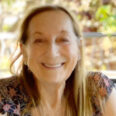
Tyler Colenbrander (BS '23). Credit: Caltech
While growing up, alumnus Tyler Colenbrander (BS ’23) knew that he liked making things, but it was not until his high school STEM program that he found his true calling as an engineer: “My first year in high school, we had an alternative energy car project in class. We made small model cars, and then we were supposed to make them move 5 meters with some alternative form of energy. Some of the suggested ideas were to tie up a rubber band or use a mousetrap spring to store energy and then release it to move the car. But I had gone to the local county fair where I saw a project that used little hobbyist solar cells. I thought it would be cool if we could somehow connect this up to a motor and make our car run on solar power. It actually ended up working, and it was just mind-boggling to me that I could put this thing outside, and it would move. This one class changed the whole trajectory of my academic career. From that moment on, I became determined to figure out how solar cells work.”
Colenbrander’s interest in solar power eventually brought him to Caltech as an undergrad; to a Summer Undergraduate Research Fellowship (SURF) project with Harry Atwater (Howard Hughes Professor of Applied Physics and Materials Science, the Otis Booth Leadership Chair of the Division of Engineering and Applied Science, and director of the Liquid Sunlight Alliance); to conducting research with the Solar Array Technology and Engineering Group at JPL (which Caltech manages for NASA), for which he won a Goldwater Scholarship; and, after graduating Caltech in 2023, to a Churchill Scholarship that has funded a one-year MPhil degree in physics at the University of Cambridge.
Next academic year, Colenbrander will begin a PhD program in electrical engineering at Stanford University as a Knight-Hennessy Scholar (KHS). Knight-Hennessy scholarships provide funding for three years of graduate study, during which scholars conduct research projects, attend retreats and global study trips together, and share a dedicated meeting space.
Colenbrander will work with perovskite solar cells—as he did as an undergraduate working at JPL—when he begins his graduate studies at Stanford University in fall 2024, where he will specialize in electrical engineering. “The semiconductors you use in a solar cell have a band gap, certain frequencies of light that they are able to absorb,” Colenbrander explains. “With perovskites, you can tune these band gaps. You can pair different semiconductors with different band gaps—one higher and one lower—which makes them more efficient absorbers of solar energy. Furthermore, perovskites are useful not only for solar cells but for lots of different types of semiconductor devices, such as night vision or lasers.”
Colenbrander was drawn to Stanford because of the close fit of his interests with those of the faculty and because of the university’s emphasis on interdisciplinary work. “There are chemistry people working in the electrical engineering group that I’m considering joining. There are electrical engineering people who go work in applied physics and vice versa. And then the Knight-Hennessy program is very exciting because it brings together a lot of students from drastically different backgrounds.”
The KHS program was founded in 2016 “to educate and prepare a community of scholars for leadership roles,” according to the program website. Operating on the premise that “leadership in the modern world requires multicultural and multidisciplinary understanding,” the Knight-Hennessy program reasons that “the most important problems that the world faces are often global and usually require experts across multiple disciplines to make meaningful progress.” KHS members have hailed from 68 different countries and from all of Stanford’s seven different graduate schools (medicine, engineering, law, business, education, humanities and social sciences, earth energy and environmental sciences).
Colenbrander became aware of the interdisciplinarity of KHS during an immersion weekend when finalists were brought to the Stanford campus. “I just made instant connections with people who were also interested in renewable energy and combating climate change,” Colenbrander says, “but from vastly different angles—so people in business, people doing law, people from other STEM fields. I work on device fabrication, making solar cells, but I met someone else who was working on characterizing materials that could then be used for solar cells.” This kind of collaboration is key to Colenbrander’s goal of doing something “that has a tangible impact at some point,” he says. “I’m doing things in the lab that won’t necessarily translate to the real world the next day or even the next year, but I think the Knight-Hennessy program will create a whole network of people who can combine STEM research with business, policy, and law to bring change to the forefront.”














 1 comment
1 comment



